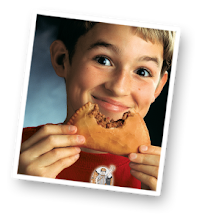I’ve never heard anyone say “knoll” without saying “grassy” before it and without talking about Dealey Plaza and the assassination of President John Kennedy, Nov. 22, 1963.
“A lot of people, including a couple of motorcycle policemen, are running toward the little grassy hill,” I would have said. Or “the hill with grass on it.” Maybe “the green where it goes sort of up.”
Another reporter might have said “grassy hummock,” but I doubt he would have been from north Louisiana or from Lake View, S.C.
Whether it’s a hillock or a hummock or a knoll or a rise or a mound might depend on where you stand. Regardless, “knoll” is the perfect word here. “Grassy knoll” has an aura of mystery; “green hill” or “grassy hillock,” not so much.
But there’s no doubt about this: One guy, UPI reporter Merriman Smith, is credited with first using the term, in one of his dispatches less than half an hour after the president was shot. Smith and others were in a press pool car a few cars back of the presidential limousine.
One guy said it, now the whole world does.
Lee Harvey Oswald was just one guy. He, too, altered history in those few moments 50 years ago, and in a much more dramatic way than reporter Smith did. While many conspiracy theories about the JFK assassination exist — one might even be true? — the majority exist solely because most of us find it hard to believe that history can be altered so dramatically by just one random act of a single otherwise undramatic, “regular” person. Hard to understand how one guy with a $20 mail-order rifle can, in less than a dozen seconds, tilt the world’s axis.
But each of us, in a good way or bad, positive or negative, make a difference. Every day. Few actions are as dramatic to the entire world as what Oswald chose a half century ago, but every little thing each of us does adds up.
Most people have heard of Dwight L. Moody, one of the greatest communicators of the gospel in history. Few people have heard of Edward Kimball, who one day visited a boy in his Sunday school class named Dwight, who was stocking shoes at work. Kimball led the young man to Christ, there in the shoe store, and Moody led thousands and thousands of others.One guy, Edward Kimball, made a big positive difference.
A wolf chases a rabbit, loosens some dirt and rocks fall and a small river’s course is changed and what happens over the next few millions of years is ... the Grand Canyon? One wolf, or one faster rabbit, makes a difference.
In fiction, we all know that George Bailey had a wonderful life because he helped others have one, without his even really realizing it. His big moment was really years of little ones, strung together.
None of us was put on the earth to sit the bench and watch everyone else carry the ball. “Nothing would be the same if you did not exist,” I read this week. “Every place you have ever been and everyone you have ever spoken to would be different without you.”
JFK’s most famous quote is probably the one about not asking your country what it can do for you, but what you can do for your country. We start by doing what is right for each other. We’re going to make a difference, one way or the other.
Few might notice right away, and no one might ever stand on a high hill — even a knoll — and praise you. But somebody will notice, that’s for sure. That, and the truth that we each have control over what kind of difference we make.
-30-

